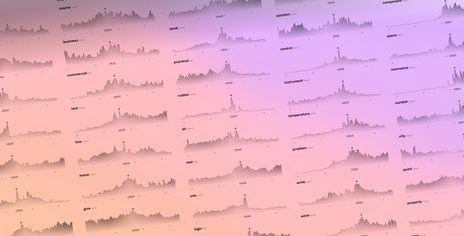
A year ago, as we contemplated the prospect of weeks or months sheltering in place, we thought up a novel community service project. People were stuck at home. Could we help them use their free time to learn a valuable new skill? Could we teach an online course for thousands centered around real human community? For each of us, computer science is the closest thing in the world to real magic. Even more than studying it, we love to share it. We and a team of colleagues set out to turn Stanford’s introductory coding class, CS106A, into a massive virtual community: Code in Place.
Two months later, the results were in: 10,000 students from 120 countries embraced the joy of coding through the course. Students who had never before attempted to code were implementing projects in Python, including tools to model dynamics of the COVID pandemic, analyze DNA, conduct sentiment analysis from Twitter and create a choose-your-own-adventure film. A handful of students kick-started new careers in computer science, and several became professional teachers. A student from Italy called it, “the most enjoyable, mentally stimulating and rewarding experience I have ever encountered.” Our secret ingredient was the community of 908 section leaders who volunteered their time to give students live weekly, interactive support in small, virtual groups for 40 minutes. Section leaders joined from over 350 cities on six continents, spoke more than 30 different languages, and came from every walk of life. We think this model can change the way we think about teaching and learning at scale.
This year, we plan to replicate and build on the success of Code in Place to give even more students a potentially life-changing experience. In order to scale the course to the public in a way that maintains its magic, we are looking for volunteer mentors to serve as section leaders. This is where you come in. If you know basic Python and are excited to share your knowledge with others, we invite you to join us in our effort to make high-quality computer science education accessible to all. We are accepting applications to section lead until March 25. Teaching obligations will run for five weeks, from April 19 until May 21. Your time commitment will be around five hours per week. And don’t worry, you don’t have to do any grading. Many more details and FAQs are at this link. Most importantly, each new volunteer means 10 more students from around the world learn to love coding.
We predict that the number of people in the world eager to teach is proportional to the number of people eager to learn. That is a powerful concept; it means that if we can create platforms that connect teachers with students, training and community, we can provide high-quality, human-personalized education almost without limitation.
We asked our volunteer section leaders from last year why they joined us and what they got from the experience. Here are a few themes that stuck with us:
- Section leaders improved or kick-started their computer science teaching. “I never thought that I would teach CS to a section, let alone in this kind of setting. But the community support, teaching materials, and advising made it that much easier to start.” “I had a great time participating in Code in Place. My dream is to become a professor of computer science, and this experience has taught me a lot.”
- Volunteers also appreciated the distilled expertise from decades of Stanford teaching. “We were all so grateful to the amazing people at Stanford—creators of this course, every handout, assignments, discussion post. You made it all seem so easy, as if you have done it so many times before…. So very well organized! The exercises were just right—students are hungry for more.”
- There was great excitement about participation in such a global community. “I wanted to teach students at my old school intro CS before all that coronavirus spread here in Egypt, I wanted to help those who wanted to start to be on the right track since the community here where I live doesn’t get enough support.” To which another teacher replied, “Would love to hear about how this goes for you! I’m in South Africa and I also want to help high schoolers out since many don’t get the chance to be exposed to computer science due to our not-so-good education system.”
- It was rewarding to contribute to an educational experiment that will improve online learning globally. “[It’s] a community seeking to change how computer science education works on a global level.” “This experience changed my perception of online learning. I would happily trade many in-person classes for this one because of the quality of the teaching team.”
- People valued the vibrant community. “My heart just melted. This community is just wonderful. I just hope to recreate this in my local community and spread knowledge and inspire as many people as I can!” “In my last section, no one wanted to sign off. They were very sad the experience was coming to an end. They said they loved lectures, loved sections, loved being back in the classroom, and felt sort of energized by it all—especially during this time.”
- Section leaders felt proud. “Well done team. Really happy to see those retention numbers. Proud to have been a part of this endeavor.” “You will look back and pat yourself on the back for making this decision.”
- Section leaders had fun. “Honestly, I can’t believe how much fun this has been. I’m really going to miss it all.” “It is not only a great experience, but also it is super fun!!! You get to learn from people around the world with different backgrounds. You do not only get a chance to bring something to their lives but also you get to have them add something to your life.” “It was a lot more fun than I expected. There’s excellent support to ensure you succeed. Students are so appreciative. Overall, a very rewarding experience. Just do it!”
The pandemic has shown us the virtues and limitations of virtual education. We are all asking what we will carry forward from our pandemic lives into the post-pandemic world. For us, an indelible memory of this year was seeing a community of thousands form out of nowhere around a shared love of coding. We believe that sort of community is something worth carrying forward beyond the end of our socially distanced lives, and we invite you to join us.
If you are passionate about teaching, programming, or both, and if you have an internet connection stable enough for a video call, you can apply to teach at this link by Friday, March 25 anywhere on Earth. Check out the announcement to learn more. If you have any questions please email [email protected] or DM us on Twitter: @sectionleadcs.
This is an opinion and analysis article.



